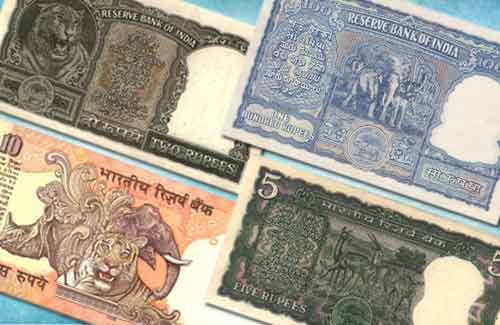There are different aspects of India that are depicted on the reverse such as the flora and fauna of the country, famous architectures, science and technology, agriculture and allied activities etc.
Let’s see the different animal motifs that occur on our banknotes.
1. Tiger: INR 2
The famous Bengal tiger, our national animal, features on our INR 2 banknotes. The notes issued under authority of B. Rama Rau have a tiger motif on the reverse, facing left. The notes issued under the authority of P. C. Bhattacharya have two distinct tiger motifs. The olive green coloured notes have a tiger facing right and the brown coloured one have a standing tiger on the reverse.
2. Antelopes Bovidae and Cervidae: INR 5
The herbivore families of antelopes, gazelles, bucks and deer adorn the INR 5 banknotes of India. The notes issued under B. Rama Rau have Indian antelopes featured on the notes in two varieties: one has 3 antelopes (black bucks) in which two are standing and one is sitting. The other variety has a group of 6 Indian black bucks some of them sitting while the others are standing. The notes issued under P. C. Bhattacharya also have a variety. One depicts 3 sambar deer while the other depicts 4 gazalles. The notes issued by S. Jagannathan feature 4 standing black bucks on them.
3. National Prides: INR 10
The INR 10 banknotes have our national faunal prides on them. The notes issued under the authority of S. Jagannathan have two peacocks, our national bird, in the centre flocked by 3 deer and 2 horses. The notes issued under C. Rangarajan have fierce faces of an elephant, a tiger and a one-horned Indian rhinoceros.
4. Elephant: INR 100
Notes issued under the authority of B. Rama Rau have elephants depicted on them. There are two types of elephants: one Indian elephant with smaller ears and the other has an African elephant with relatively bigger ears. Experts sight difference between the sizes of the tusks as well. The other difference in the notes is that the one with African elephant has the Reserve Bank of India’s seal on the left side of the note while the other has the seal in the centre under the image of the elephants.
-
Stamps on International Refugee Day
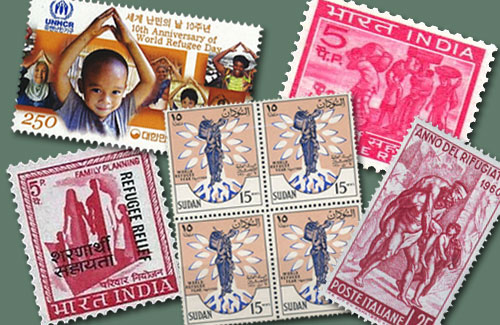
Violence, wars, terrorist attacks and prosecutions have torn the world apart into pieces t...
-
Young Philatelist: Mythical Creatures on Stamps
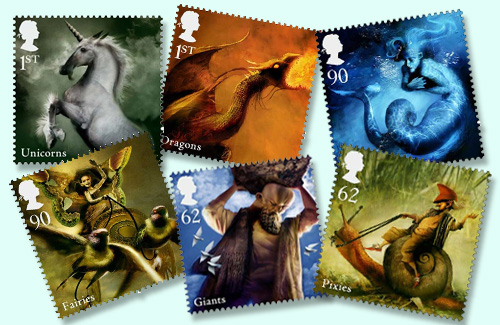
Can you imagine a world without stories? We were all born to tell and listen to them; that...
-
Young Numismatist: Time to Show You The Money
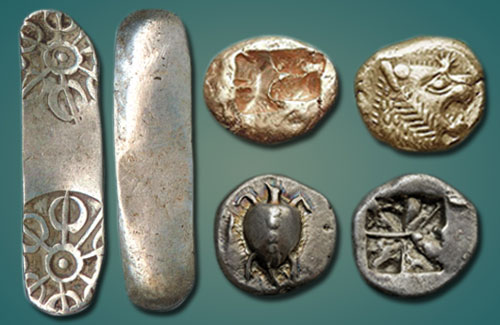
You always cribbed “Show Me the Money”. Now you get to see me in person, nice, up and ...
-
Types of Fancy Number Currency Notes
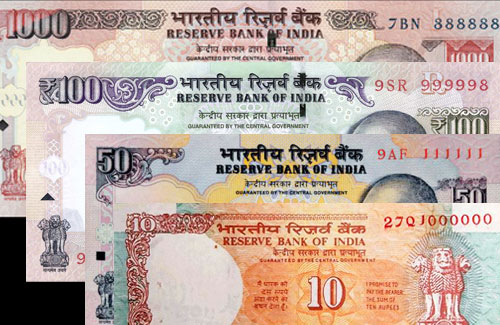
Types of Fancy Number Currency Notes Many notes come and go from your pockets and wallets...
-
Essential Tools for Every Stamp Collector

Gearing up the right way for anything that you have set your minds on always comes in hand...
-
Celebrating Buddha Purnima Through Coinage
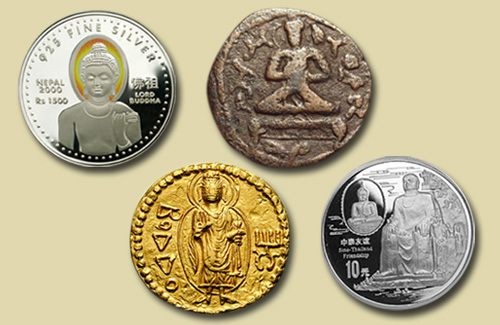
21st May will be observed as Buddha Purnima this year across the country, celebrating the ...
-
Why Can't a Country Choose to Get Richer By Printing More Paper Money?
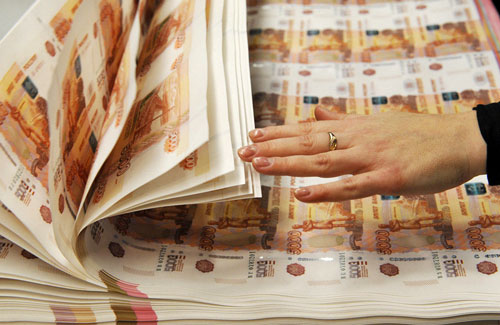
A question that many of us might have thought of, but never knew whom to ask. Today, let�...
-
Remembering Rabindranath Tagore
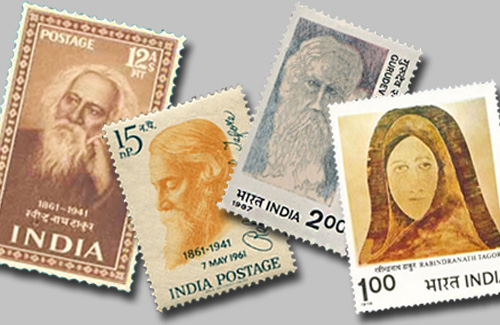
7th May 1861 was a special day in Indian history indeed. Rabindranath Tagore, one of the w...
-
CM Devendra Fadnavis Launches Mintage World

23rd April 2016 was a very special and eventful day indeed! Mintageworld.com was officiall...
-
8 Tips for Budding Stamp Collectors
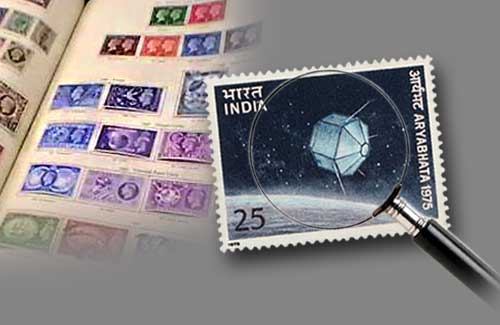
Collecting stamps is more than just a hobby for some. It’s an experience that helps you ...

